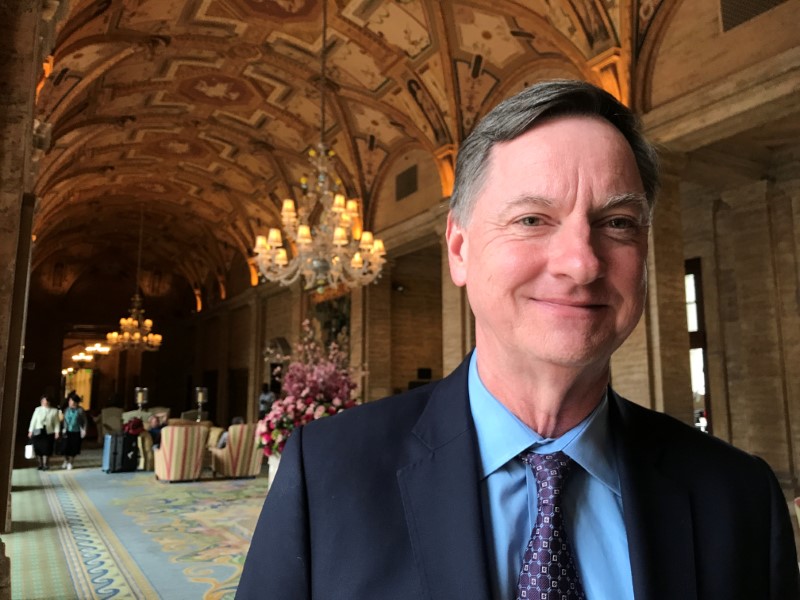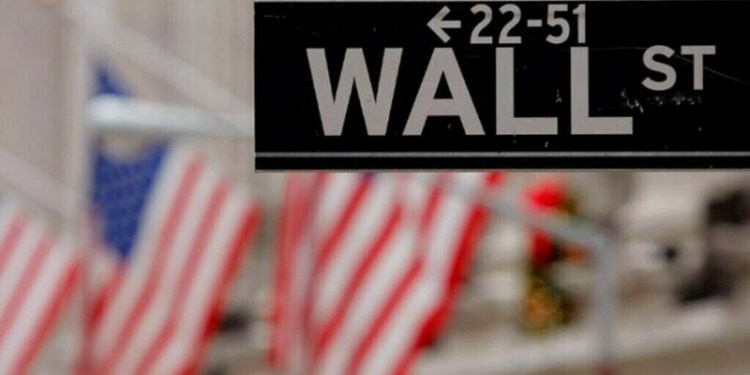 © Reuters. Charles Evans, president of the Federal Reserve Bank of Chicago, poses for a photo in Palm Beach
© Reuters. Charles Evans, president of the Federal Reserve Bank of Chicago, poses for a photo in Palm BeachBy Howard Schneider
CHICAGO (Reuters) – The U.S. economy is performing “very well” with continued growth clearing the way for one or two more interest rate hikes in 2018, Chicago Federal Reserve Bank President Charles Evans said on Thursday in an interview in which he dismissed earlier worries about weak inflation.
“It could be one or two more,” following rate increases in April and June, said Evans, who as recently as December dissented against a Fed policy-setting committee decision to raise rates.
He said the economy’s “extremely strong” performance has made him confident now that inflation will stay near or even move slightly above the Fed’s 2 percent target, while unemployment remains low and GDP growth continues in a range of 2.5 percent to 3 percent at least through next year.
“It is really a very good period of time for the economy and the setting of monetary policy,” Evans said in the interview at the Chicago Fed’s downtown headquarters, adding that the U.S. central bank was in a position to move rates slowly higher without evidence yet that it is either restraining growth and employment or risking a takeoff in price increases.
In a policy statement last week, the Fed characterized the economy as “strong,” enforcing market expectations for rate hikes in September and December – despite recent criticism from President Donald Trump that higher rates could undermine his policies.
Evans is not a voter this year on the rate-setting committee but he has been a steady voice against raising rates too high, too quickly, until it was clear inflation would meet the Fed’s goal. Doing so, he said, would risk curbing some business hiring and spending decisions at a time when the employment scars of the 2007-2009 recession were still healing.
Now, “inflation has moved up to 2 percent essentially. There is good reason to expect we will stay in that area,” neither slipping back as some policymakers have feared, or accelerating in a way that would force the Fed to raise rates more quickly, Evans said.
TRADE UNCERTAINTY
Evans said debate will intensify next year about a stopping point as the Fed feels its way toward a “neutral” interest rate that is neither encouraging or discouraging spending and investment decisions, and weighs whether inflation risks have become so great that it needs to move even higher and actually restrain businesses and households.
But for now, he said the Fed’s current plans seem well-aligned with where the economy is heading. Its employment and inflation goals are essentially met, and there are no imminent risks that appear likely to throw things off course.
“Labor markets are good. Household balance sheets seem like they are fine. Businesses are optimistic … The global economic environment seems to be really quite good,” Evans said.
Even the global trade dispute, which raises the specter of rising tariffs and disrupted world supply chains, has yet to become a big enough problem to change that rosy outlook.
Evans said the trade issue had added an element of uncertainty that may delay some business investment, but added that it was being offset by corporate enthusiasm over tax cuts and deregulation, and the Trump administration’s new spending.
“You size up the tariffs, the increases in input costs … and you find that while it sounds like a big number … the actual effect on industry output and GDP is still measured in a few tenths” of a percentage point, Evans said.
“The magnitude still seems to be relatively small, uncertain, against a context where the economy is very strong and we have just added quite a lot of fiscal stimulus.”
“Are there a few headwinds? Yeah. But it feels more like tailwinds.”
Source: Investing.com

























